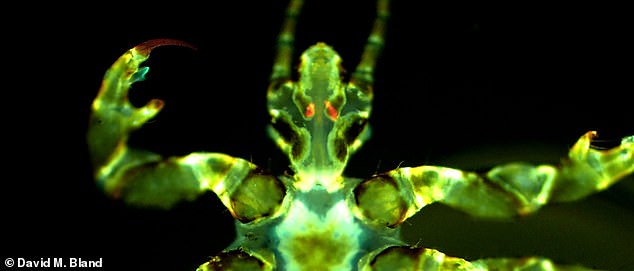Don’t just blame the rats! Body lice may have been just as responsible for spreading the plague in the 13th century, research shows
- Rats and fleas are usually blamed for the spread of the plague in Europe
- But lice could just as easily have been responsible for transmitting the disease
When it comes to the spread of plague, rats and fleas are usually the biggest culprits.
But according to a new study, lice may have been just as responsible for transmitting the disease.
The Black Death pandemic – one of the deadliest in history – devastated Europe between 1347 and 1351, killing tens of millions of people.
Symptoms included fever, fatigue, chills, vomiting, headache, delirium and buboes – tender, swollen lymph nodes in the groin and armpits.
It was long thought that the disease was transmitted from rodents to humans through the bite of infected fleas.
The Black Death pandemic – one of the deadliest in history – devastated Europe between 1347 and 1351, killing tens of millions of people

When it comes to the spread of plague, rats and fleas are usually the biggest culprits. But according to a new study, lice (pictured) may have been just as responsible for transmitting the disease
However, a new study shows that human body lice are more efficient at transmitting Yersinia pestis – the bacteria that causes plague – than previously thought.
The findings, published in the journal Plos Biology, support the possibility that the parasites may have contributed to previous pandemics.
Researchers at the United States National Institute of Allergy and Infectious Diseases conducted laboratory experiments in which body lice fed on blood samples containing Y. pestis.
They found that body lice became infected with the bacteria and were able to routinely transmit it after feeding on blood containing levels of the pathogen similar to those found in actual cases of human plague.
Further analysis also revealed that the bacteria can infect a pair of salivary glands that lice have – indicating that the disease then spreads to humans when they are bitten.

They found that body lice became infected with the bacteria and were able to routinely transmit it after feeding on blood containing levels of the pathogen similar to those found in actual cases of human plague.
The researchers wrote: ‘Human body lice are blood-feeding parasites of their only host, humans.
‘The insects reside in the seams of human clothing where they lay their eggs and periodically return to the skin to feed five to six times a day.
‘Few studies have directly evaluated the body louse’s ability to transmit Y. pestis. We have discovered that human body lice are better at transmitting Y. pestis than once thought.”
They added that the key characteristics of body lice that likely contribute to their ability to spread the disease are the fact that they ingest a large amount of blood in a single feeding, increasing the amount of bacteria they consume.
Their frequent feeding behavior also increases the chance that lice will transmit enough bacteria to cause disease, they said.
Today’s body lice infestations are typically linked to homelessness, poverty, war and natural disasters – any situation that results in reduced hygiene and access to clean clothing and bedding.
